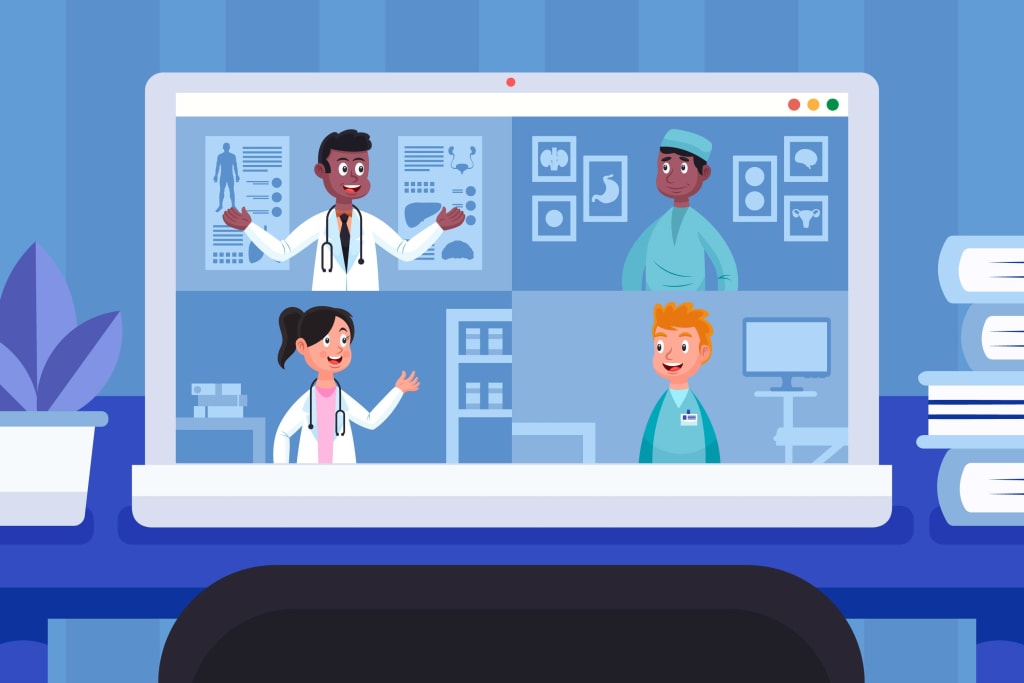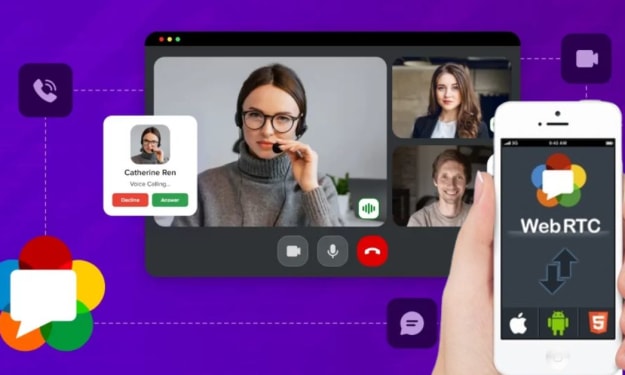How WebRTC Development Solutions are Transforming the Telehealth System
WebRTC Development Solutions

The telehealth industry has seen rapid growth, particularly in the wake of the COVID-19 pandemic, which highlighted the need for remote healthcare services. Web Real-Time Communication (WebRTC) stands out as a game-changer among the technologies driving this transformation. WebRTC enables real-time video, audio, and data sharing directly within web browsers, offering a seamless, high-quality communication experience. This blog explores how WebRTC development solutions are revolutionizing the telehealth system, enhancing patient care, and streamlining healthcare delivery.
Understanding WebRTC: A Brief Overview
WebRTC is a free and open technology that enables web applications and websites to incorporate Real-Time Communications (RTC) features through a user-friendly API.s. Supported by major browsers like Google Chrome, Mozilla Firefox, Microsoft Edge, and Apple Safari, WebRTC enables real-time video, voice, and data communication without the need for additional plugins or software. The core components of WebRTC include:
- GetUserMedia: Captures audio and video.
- RTCPeerConnection: Manages audio and video calls.
- RTCDataChannel: Enables peer-to-peer data exchange.
These components work together to provide a robust framework for developing telehealth solutions that are accessible, efficient, and secure.
The Impact of WebRTC on Telehealth
1. Real-Time Video Consultations
One of the most significant advantages of WebRTC in telehealth is its ability to facilitate real-time video consultations. This capability allows patients to connect with healthcare providers from the comfort of their homes, reducing the need for physical visits. WebRTC ensures high-quality video and audio communication, which is crucial for accurate diagnosis and effective patient-provider interactions.
2. Enhanced Accessibility
WebRTC's cross-platform compatibility ensures that telehealth services are accessible to a broad audience. Whether patients are using a desktop computer, tablet, or smartphone, they can access telehealth services without needing to download or install additional software. This ease of access is particularly beneficial for elderly patients or those with limited technical skills.
3. Improved Patient Engagement
Telehealth solutions powered by WebRTC can offer features like screen sharing, interactive whiteboards, and instant messaging, enhancing patient engagement. For example, doctors can share their screens to explain medical conditions or treatment plans more effectively. This interactive approach can lead to better patient understanding and adherence to treatment protocols.
4. Cost Efficiency
Traditional healthcare delivery can be expensive, both for providers and patients. WebRTC reduces costs by eliminating the need for physical infrastructure and travel. Patients save on travel expenses and time, while healthcare providers can see more patients without the limitations of office hours and physical space.
5. Scalability
WebRTC-based telehealth solutions are highly scalable. They can support a growing number of users without significant performance degradation, making them ideal for large healthcare organizations and telehealth providers looking to expand their services. This scalability ensures that as the demand for telehealth services grows, the underlying technology can keep pace.
Key Features of WebRTC in Telehealth
1. High-Quality Video and Audio
WebRTC ensures high-definition video and clear audio quality, which are critical for effective telehealth consultations. The technology automatically adjusts to network conditions to provide the best possible communication quality, minimizing disruptions and ensuring a smooth experience for both patients and providers.
2. Secure Communication
Security and privacy are paramount in healthcare. WebRTC offers robust security features, including end-to-end encryption for all media streams and data channels. This ensures that patient information remains confidential and complies with regulations like HIPAA (Health Insurance Portability and Accountability Act) in the United States.
3. Real-Time Data Sharing
In addition to video and audio, WebRTC supports real-time data sharing. This allows healthcare providers to exchange medical records, diagnostic images, and other critical information during a consultation. Real-time data sharing can lead to more accurate diagnoses and more informed treatment decisions.
4. Integration with Electronic Health Records (EHR)
WebRTC solutions can be integrated with existing EHR systems, streamlining workflows for healthcare providers. This integration allows for easy access to patient records during consultations, enabling more personalized and informed care. Additionally, it simplifies documentation and ensures that all patient interactions are recorded accurately.
5. Interactive Tools
WebRTC supports various interactive tools that enhance the telehealth experience. Features like interactive whiteboards, chat, and screen sharing allow healthcare providers to communicate more effectively with patients. These tools can be used for educational purposes, explaining complex medical conditions, or guiding patients through treatment plans.
Also Read: What Does WebRTC Web Application Development Include?
Case Studies: WebRTC in Action
1. Remote Patient Monitoring
WebRTC has enabled the development of remote patient monitoring systems, where patients can use wearable devices to track their vital signs. Healthcare providers can monitor this data in real-time, providing timely interventions when necessary. This is particularly beneficial for managing chronic conditions like diabetes and hypertension.
2. Telepsychiatry
Telepsychiatry has seen significant growth with the advent of WebRTC. Patients can have regular therapy sessions with their psychiatrists from the comfort of their homes, reducing the stigma associated with visiting a mental health clinic. WebRTC ensures that these sessions are secure and private, maintaining patient confidentiality.
3. Virtual Clinics
Healthcare providers are establishing virtual clinics using WebRTC technology. These clinics offer a range of services, from routine check-ups to specialist consultations. Virtual clinics can operate 24/7, providing patients with access to healthcare services at any time, which is particularly useful for urgent care.
The Future of WebRTC in Telehealth
The potential of WebRTC in telehealth is vast and continually evolving. Future developments may include enhanced AI-driven diagnostic tools integrated with WebRTC platforms, providing even more accurate and timely healthcare. Additionally, advancements in 5G technology will further improve the quality and reliability of WebRTC-based telehealth services, making them more accessible and efficient.
Conclusion
WebRTC development solutions are at the forefront of transforming the telehealth system. By enabling real-time, high-quality, and secure communication, WebRTC is enhancing patient care, improving accessibility, and reducing costs. As the demand for telehealth services continues to grow, WebRTC will play a pivotal role in shaping the future of healthcare delivery. For healthcare providers and telehealth innovators, investing in WebRTC technology is a strategic move that promises to deliver significant benefits for both patients and the healthcare system as a whole.
About the Creator
Master Software Solutions
Master Software Solutions is an IT service-based company. We are a team of 90+ IT experts with more than 12 years of experience. We provide development and tech-consulting services for platforms, like HubSpot, Salesforce and WebRTC.
Enjoyed the story? Support the Creator.
Subscribe for free to receive all their stories in your feed. You could also pledge your support or give them a one-off tip, letting them know you appreciate their work.






Comments
There are no comments for this story
Be the first to respond and start the conversation.